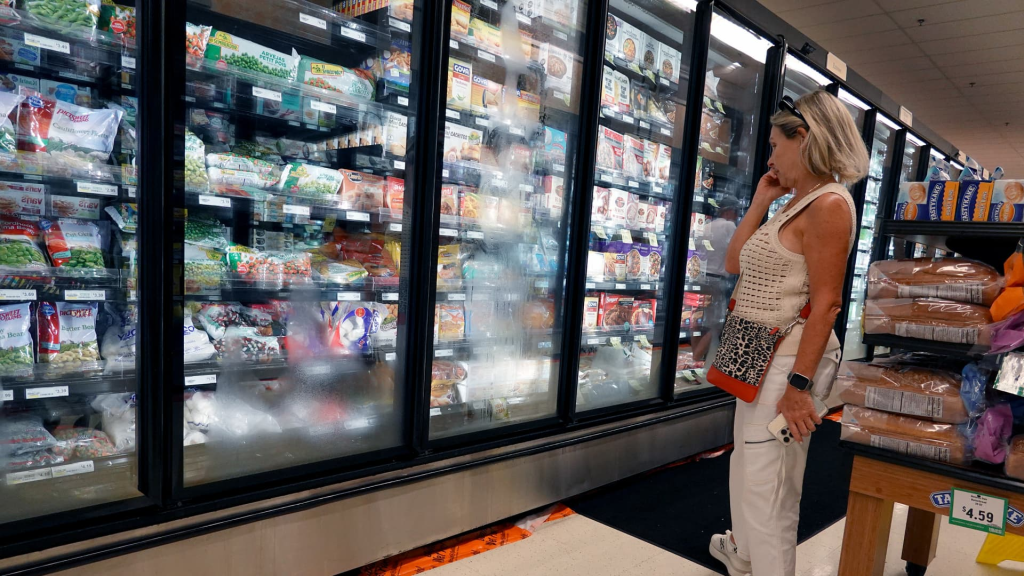Americans Set to Spend Record $12 Billion Online Shopping: A Resilient Consumer Economy
Americans Set to Spend Record $12 Billion Online Shopping: A Resilient Consumer Economy

Introduction
The holiday season is upon us, and Americans are gearing up to make their purchases during the biggest online shopping event of the year. Cyber Monday is expected to break records, with Americans projected to spend a staggering $12 billion online, according to Adobe Analytics[^1^]. This comes after a strong showing on Black Friday, where online sales were particularly robust, indicating the resilience of consumer spending in the face of various challenges[^1^].
The Resilience of Consumer Spending

Despite factors such as elevated borrowing costs, three years of high inflation, and increasing numbers of Americans dipping into their retirement plans, consumer spending continues to drive the US economy forward[^1^]. Michelle Meyer, Chief US Economist at the Mastercard Economics Institute, highlights the ability of the US consumer to navigate a high-inflationary environment[^1^]. This resilience is further evident from the projected $37.2 billion in online shopping during Cyber Week, a 5.4% increase from the previous year[^1^].
It’s important to note that the increase in consumer spending isn’t solely due to inflation and increased prices. Online prices have been falling, indicating real demand growth[^1^]. Adobe Analytics suggests that if online deflation was factored in, the growth in consumer spending would be even stronger[^1^].
Promotions and Discounts Drive Sales

To entice shoppers, retailers are relying heavily on promotions and discounts. Adobe Analytics expects discounts of up to 35% off toys, deep discounts for electronics (up to 30%), sporting goods (up to 24%), apparel (up to 25%), and appliances (up to 20%)[^1^]. JCPenney, for example, has slashed prices on certain items to pre-Covid levels, offering consumers a chance to purchase gifts at 2019 prices[^1^].
The early results suggest that the holiday shopping season is off to a positive start, aided in part by lower gas prices. On Black Friday alone, Americans spent $9.8 billion online, a 7.5% increase from the previous year[^1^]. Shoppers were particularly drawn to electronics, with sales of smartwatches up 577% compared to October 2023, TVs up 484%, and audio equipment up 376%[^1^].
The Shift to Online Shopping

While in-store sales increased by just 1.1% on Black Friday, online sales saw a much stronger growth rate of 8.5% year-over-year, according to Mastercard SpendingPulse[^1^]. Sporting events, including the NFL’s first-ever Black Friday game, contributed to the appeal of online shopping for sports fans[^1^]. However, brick-and-mortar stores still saw a 4.6% increase in store traffic compared to the previous year[^1^]. Although this increase is significant, overall traffic levels remain 20% lower than in 2019[^1^].
Aggressive Travel and Consumer Confidence
In addition to strong online shopping activity, Americans continue to demonstrate their confidence and willingness to spend by traveling aggressively. According to federal data, Sunday marked the busiest day at US airports on record, with the Transportation Security Administration screening over 2.9 million passengers, a 10% increase from the previous year[^1^]. This level of consumer confidence further supports the positive outlook for the economy in 2024.
Overcoming Obstacles
The resilience of consumer spending is particularly impressive given the obstacles faced by Americans. While inflation is cooling after three years of high living costs, many companies are hesitant to lower prices again[^1^]. Credit card rates are also at record highs due to the Federal Reserve’s interest rate policies[^1^]. Despite these challenges, the US economy continues to experience a historic jobs boom, providing consumers with the means to spend.
Falling Gas Prices Provide Relief
One notable tailwind for consumers is the significant drop in gas prices. The average price of a gallon of regular gas now stands at $3.25 nationally, down 63 cents from the September peak[^1^]. This marks 60 consecutive days of falling gas prices and the cheapest Thanksgiving Day gas prices since 2020[^1^]. The lower cost of fuel contributes to the overall positive sentiment among consumers.
The Outlook for 2024
The early strength in holiday shopping provides confidence about the outlook for the US economy in 2024. Michelle Meyer, the Chief US Economist at the Mastercard Economics Institute, believes that the economy is finding a “new equilibrium” after rapid growth following the Covid pandemic[^1^]. While a more moderate growth trajectory is expected, there is still room for the US economy to continue expanding[^1^].
Conclusion
As Americans gear up for Cyber Monday, the projected record-breaking $12 billion in online spending highlights the resilience of the US consumer economy. Despite challenges such as inflation and increased borrowing costs, consumers continue to spend, driven by enticing promotions and discounts. The shift to online shopping is evident, though brick-and-mortar stores still see steady foot traffic. With aggressive travel and falling gas prices, consumer confidence remains high, contributing to a positive outlook for the US economy in 2024.


